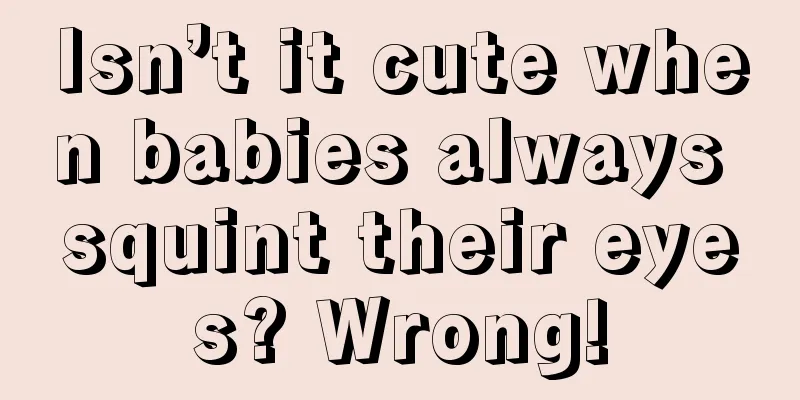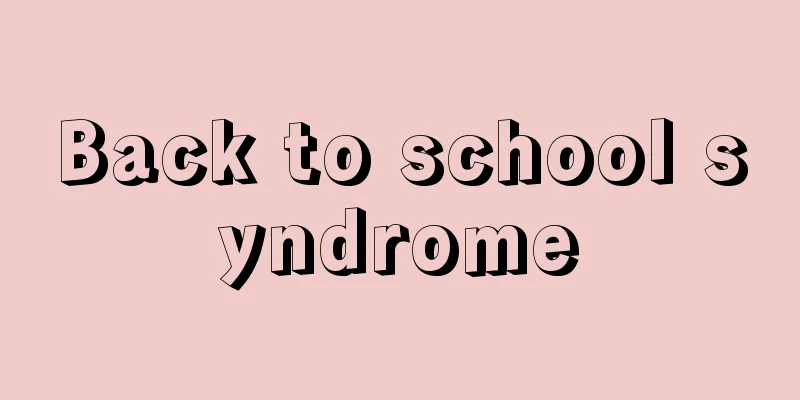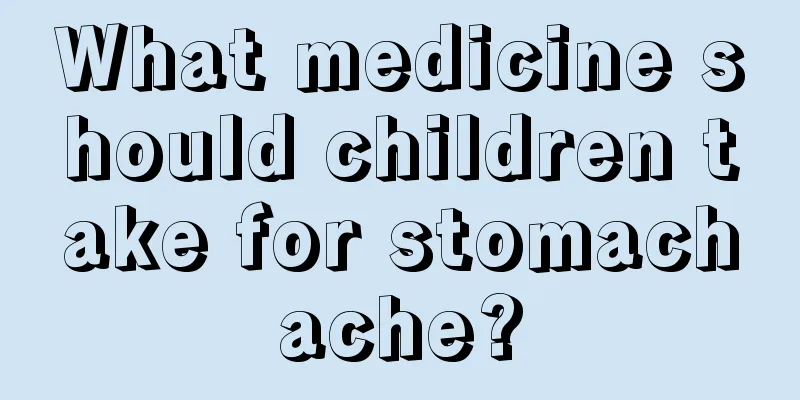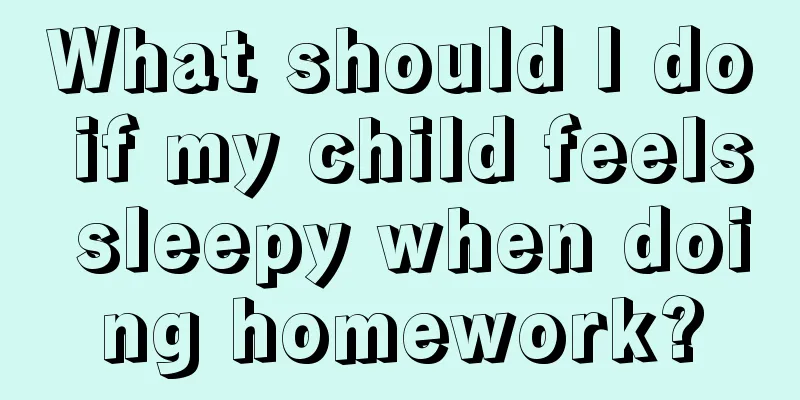Children's foot pronation
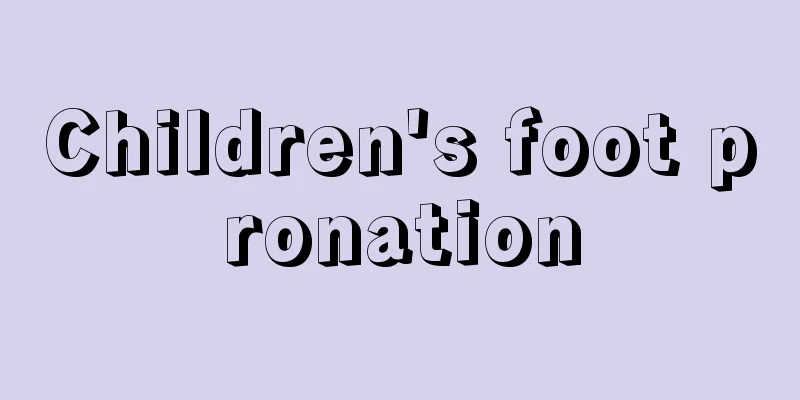
|
We will encounter many situations in reality, many of which happen to babies. For example, if we find that a child's foot is turned inward, many parents do not know the reason and will be very worried, thinking that the child has accidentally sprained his foot. But in fact, children's inversion of the foot is a common foot disease. Many people are not clear about the reasons and will misunderstand it. If you find that your child has inversion of the foot, you can read the following article to learn more. What is clubfoot 1. Definition It is a foot deformity problem. The main manifestations are: the sole of the foot shrinks or curls inward, and problems such as calcaneal inversion may also occur. 2. Incidence The possibility of a newborn having clubfoot is not high, with a prevalence rate of approximately 1/1,000 to 4.5/1,000; the incidence rate for male babies is twice that for female babies; and the incidence rate of unilateral clubfoot is higher than that of bilateral clubfoot. 3. Classification There are two types of clubfoot: congenital and acquired. If it is congenital clubfoot, it will be easier to diagnose. Generally, it is possible to find out whether the baby has clubfoot after birth. The other type is acquired, which is more complicated to diagnose because it can be caused by a variety of diseases such as cerebral palsy, spina bifida, trauma, etc., and is difficult to determine. What are the symptoms of clubfoot? The main symptoms are: the forefoot is wide and thick and adducted, the toes are curled, the heel bone is narrow and rolled inward, the foot is drooping and hollow, etc. Muscle atrophy leads to imperfect foot movement function. When standing, the main force is applied on the middle and outer sides of the dorsum of the foot, which puts a heavy burden on this area. Causes of clubfoot · TCM explanation: TCM believes that this disease is mainly caused by the child’s congenital weak constitution. Western medicine explanation: Problems with fetal development, abnormal fetal position, poor muscle and bone growth, etc. can all lead to this problem. Diagnosis and treatment of clubfoot The leg muscles of newborns are relatively soft, and the various leg structures are not yet fully mature. During this period, correct massage methods and timely and effective measures can be taken to allow the vast majority of children to return to normal. Among them, children with soft congenital clubfoot have the highest cure rate. Even for rigid clubfoot, which is difficult to treat, long-term and persistent massage can help the affected foot gradually recover. The neonatal period is the best stage for treating clubfoot. The younger the baby, the faster the leg muscles grow. Early treatment is to take advantage of the rapid growth rate of newborns to correct the feet of the children. In addition, because the feet of newborns are relatively soft, treatment as soon as possible will not only make it easier to achieve correction effects, but also promote muscle strength recovery. · Massage treatment for clubfoot Significant therapeutic effect 1. Massage helps brain development On the one hand, massage promotes the circulation of Qi and blood and regulates the functions of meridians and internal organs. On the other hand, it can also specifically treat the central nervous system of the brain and provide assistance for the growth and development of the brain and intelligence of children. 2. Different massage techniques There are fast and slow massage techniques. Slow and gentle techniques can make people feel calm, while quick and forceful techniques can make people more energetic. (1) Using gentle and slow massage techniques can relieve muscle fatigue and improve the nutritional status of tired muscles. However, strong and rapid massage techniques will have the opposite effect. (2) The massage for nourishing the marrow and rubbing the tendons also uses gentle techniques. It targets the adductor muscles and, while coordinating with acupressure, regulates the activities of the hip and knee joints. Long-term persistence will produce significant results. (3) In addition, persistent joint movement can fatigue some muscles and reduce muscle tension, thereby effectively improving muscle strength and helping muscle growth. 3. Promote muscle tissue regeneration (1) Massage can enhance local circulation, reduce pain, and effectively relieve muscle tension. It can also loosen adhesions of slippery joints, thereby improving or restoring degenerated muscle tissue. (2) Massage can convert some cellular proteins into active amine compounds and histamine-like substances. These substances, combined with the heat energy generated during massage, can promote blood vessel dilation, improve muscle atrophy, and help repair muscle tissue. Future prospects Contemporary medicine believes that acupuncture therapy mainly stimulates the nerves near the acupuncture points, and this stimulation will eventually be transmitted to the central nervous system. The central nervous system will also adjust the nervous system according to the stimulation, improving the body's blood circulation and metabolism, thereby improving the regenerative ability of cells in the diseased area and increasing the recovery speed. At present, based on research and clinical trials, the effect of massage in reducing muscle tension has been recognized by many people. Unfortunately, there are many abnormal reports on the clinical comprehensive treatment of spastic cerebral palsy in children, which leads people to ignore this therapeutic effect. Scientific clinical trials have shown that massage can effectively relieve muscle tension, and because it is manual massage, it has basically no side effects and is very worthy of promotion. However, at present, massage has not yet formed a very sound system, there are not many reported cases, and it lacks scientific rigor. How to treat clubfoot Treatment of entropion is mainly based on correction. The earlier the correction, the greater the chance of recovery for the child. There are two types of clubfoot treatment: non-surgical treatment and surgical treatment. 1. Non-surgical treatment (1) Under 1 year old: manual correction When breastfeeding, two people can perform the correction by hand. The specific operation method is: one person bends the child's legs and fixes the knee joints, and the other person holds the child's ankle with one hand and supports the plantar surface of the front foot with the other hand and applies force to force the foot to evert, abduct and dorsiflex. Do it twice a day, and be careful not to use excessive force to avoid fractures in children. The foot is then bandaged from the medial plantar surface to the lateral dorsum of the foot, and finally the foot is bound in the correct correction position. Pay attention when wrapping it and do not make it too tight so as not to affect the blood circulation of the feet. If the effect is significant and the resistance to eversion of the patient's foot disappears, a foot splint can be used for consolidation treatment. Generally, after the child is one year old, his feet will return to normal. Even if it does not return to normal, this treatment method can relax the spasmodic soft tissue and lay a good foundation for the next step of treatment. (2) 1-3 years old: staged manual correction The child is given general anesthesia and lies flat on his back with his knees bent 15° (or prone with his knees bent 90°). At the same time, one person should support the child's knee joint and calf, while the other person should correct it manually and fix it with plaster. Babies aged one to two years old should change their blankets every two weeks on average, and babies aged two to three years old should change their blankets every month on average. In addition, you must pay attention to the baby's condition after the operation. If the baby feels discomfort in the foot and starts crying, and there is plaster compression on the foot, you should seek medical attention in time and open a window at the protruding bone location under pressure. TIP: Children with mild illnesses can basically recover as long as they strictly follow the treatment rules, and there is no need to worry about complications. If you want to reinforce the results of your treatment, you can use a Denis-Browne lightweight splint. 2. Surgery (1) For children aged 3-15 years who have failed treatment, surgical treatment can be used. The main treatment methods at present include Achilles tendon lengthening, tibialis anterior muscle transfer, soft tissue release, etc. Achilles tendon lengthening also includes lengthening under direct vision, subcutaneous Achilles tendon lengthening, joint capsule incision and ligament transection. (2) For children over 15 years old who have not been cured, manual correction is no longer effective. Patients with severe clubfoot can undergo triple joint fusion surgery, followed by plaster fixation while waiting for the bones in the joint to heal. (3) Indicators of successful cure of the baby: a. The baby's feet can move freely. b. The baby's feet should be about 45 degrees abducted along the longitudinal axis of the calf. c. The baby's foot was concave when he previously suffered from clubfoot, but now the plantar surface of his hindfoot is relatively flat when he is healthy. d. X-rays can be taken to understand the recovery of the foot, such as whether the angle between the longitudinal axis of the bone and the longitudinal axis of the talus is normal; the recovery of the longitudinal arch and transverse arch of the foot. e. Viewed from behind the heel, the baby's foot is tilted slightly outward. 3. Prevent complications (1) Prevent local skin necrosis Before the operation, the skin on the inside of the foot should be massaged frequently. In addition, during the operation, the incision for extending the Achilles tendon should be as arc-shaped as possible to ensure the width of the skin flap between the incisions. (2) Be gentle with your technique When children have fractures or ankle dislocations, the technique should be slow and gentle when straightening them manually, and excessive force should not be used. (3) Avoid plaster compression Before fixing the plaster, pad the protruding parts of the bones with absorbent cotton, but be careful not to pad too thickly. Remember not to apply pressure with your hands while the cast is being molded. After the plaster is shaped, if the child continues to cry, it is possible that the plaster is pressuring him/her. In this case, you should seek medical attention immediately and open a window for examination at the protruding part. (4) Blood circulation disorder When applying plaster, the child's toes should be exposed for easy observation. If you find that the toes are white and the baby is uncomfortable and crying, it is possible that the arterial ischemia is present; if the toes are swollen and purple, it is possible that the venous return is obstructed. Either situation may lead to limb necrosis. Therefore, if the condition is mild, a window should be opened immediately to relieve decompression. If the condition is serious, the plaster should be removed and further treatment should be performed after blood circulation returns to normal. |
<<: Which calcium tablet is good for children?
Recommend
What causes hand, foot and mouth disease? These are the reasons!
Hand, foot and mouth disease mainly occurs in chi...
The baby has only one upper front tooth
Babies do not have teeth when they are just born,...
What is the normal body temperature of the baby during the month?
The baby may not be as comfortable after birth as...
At what age can a baby recover from hypothyroidism?
Hypothyroidism is an endocrine disease. It is rel...
Is it good to bathe a baby when he has diarrhea?
It is very common for babies to have various heal...
How does traditional Chinese medicine treat cough in children?
In fact, it is very common to see children coughi...
Conservative treatment of adenoids hypertrophy in children
Adenoids hypertrophy is a disease that many peopl...
Is it okay for children to take growth hormone?
The human body needs growth hormone to grow. Some...
What's wrong with the baby's sunken temples?
The birth of a newborn brings a lot of happiness ...
Is it normal for a girl to have vaginal discharge?
Some baby girls often cry incessantly, and their ...
What are the baby's development indicators at one and a half weeks?
What are the baby's development indicators at...
Tonsillectomy in children
Tonsillectomy is the most common and effective me...
At what age is surgery suitable for hydrocele
Hydrocele is a disease that many children will ha...
What should I do if my baby coughs a little while sleeping at night?
Coughing is a very common disease. Coughing can o...
What should I do if my child has allergies and itching all over his body?
When children have systemic allergies, they will ...
